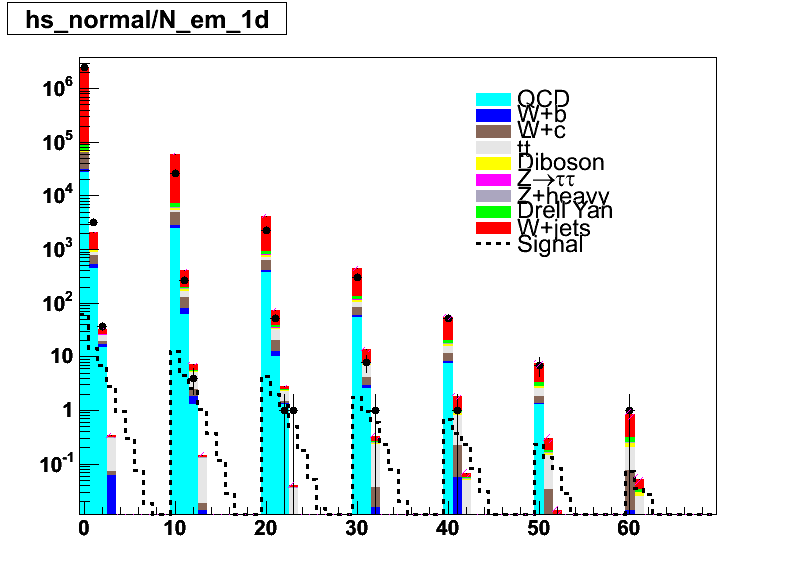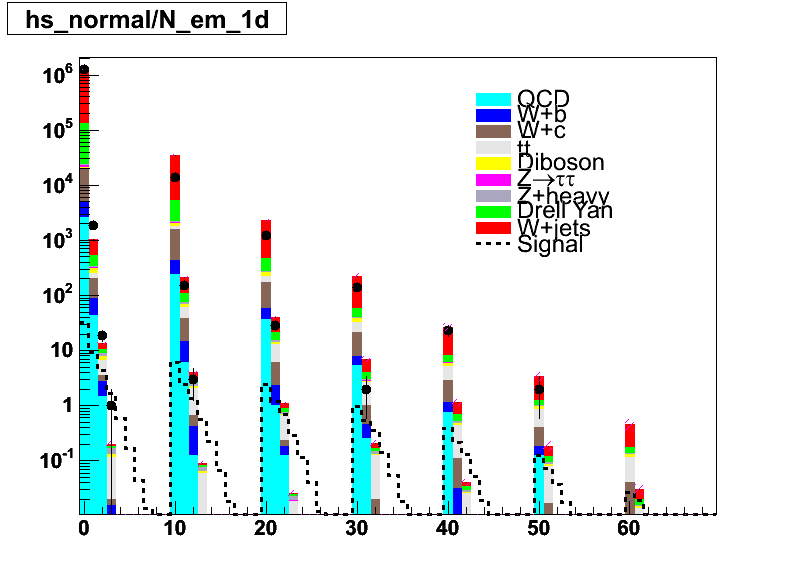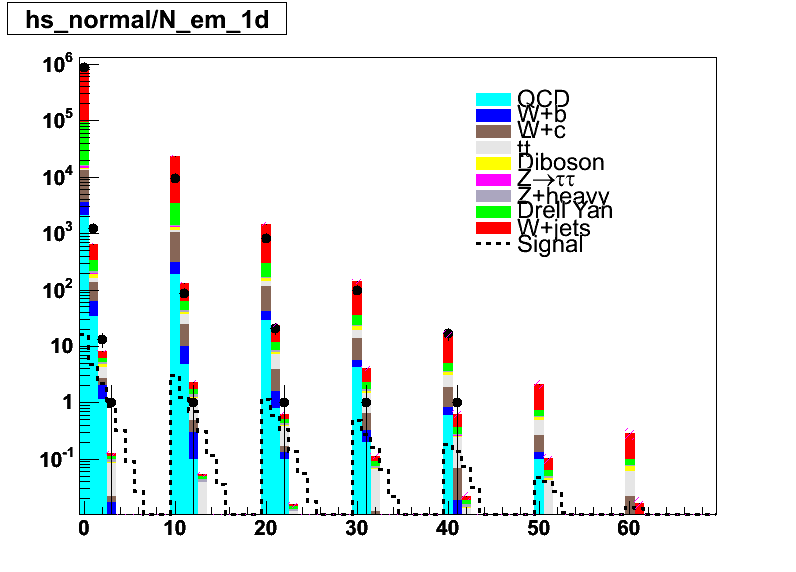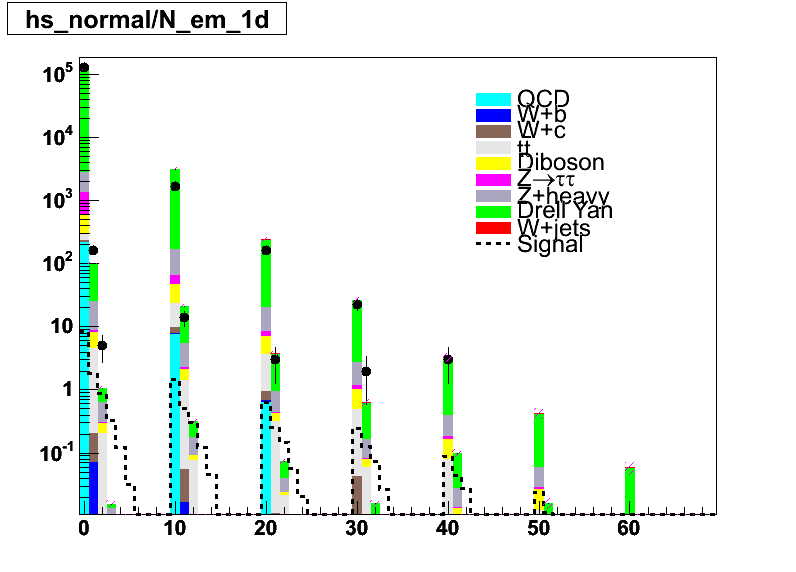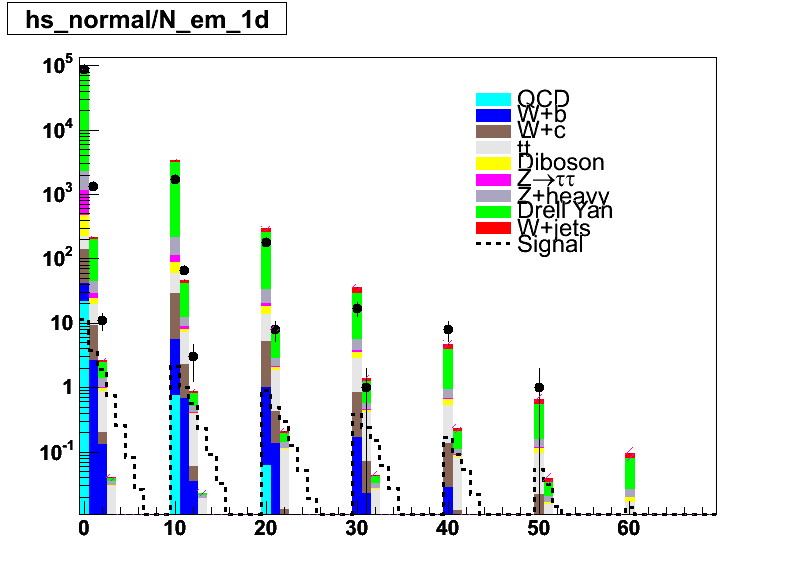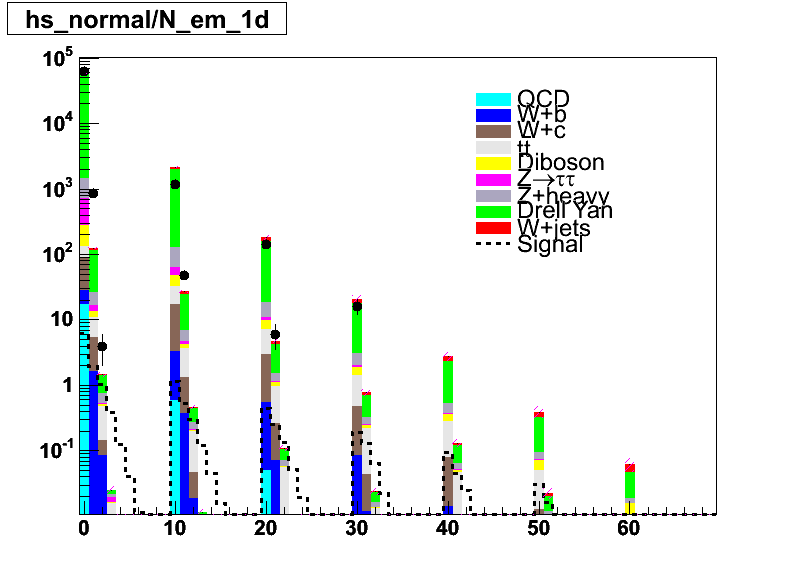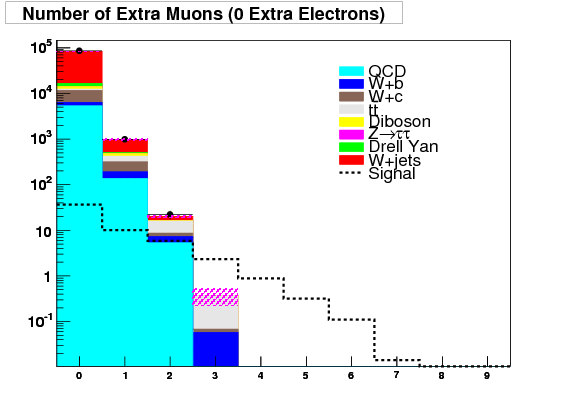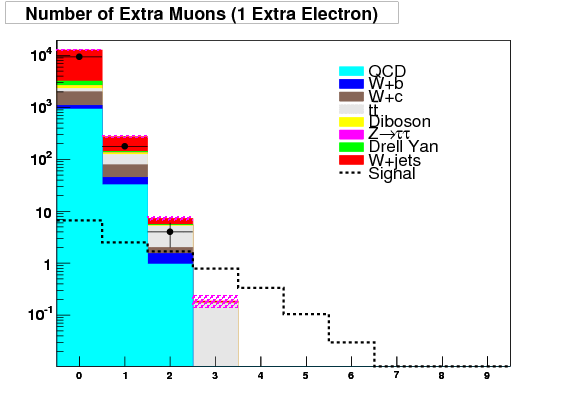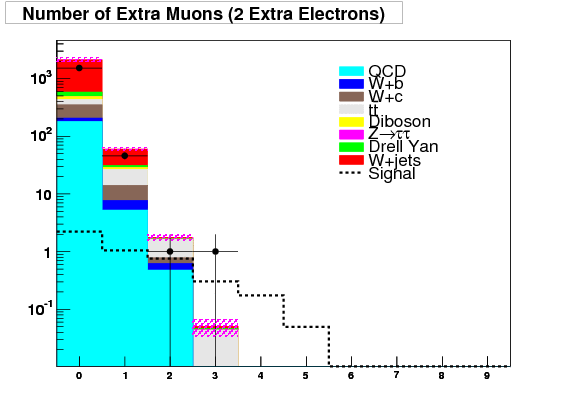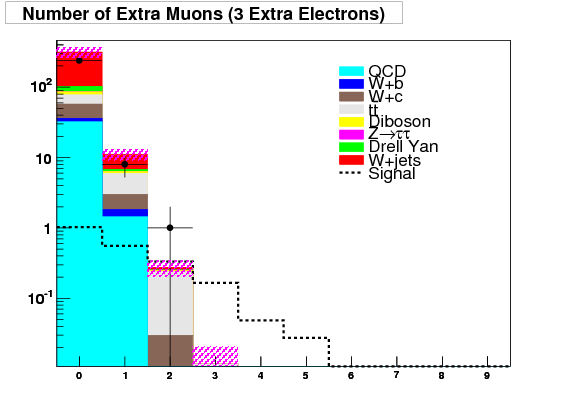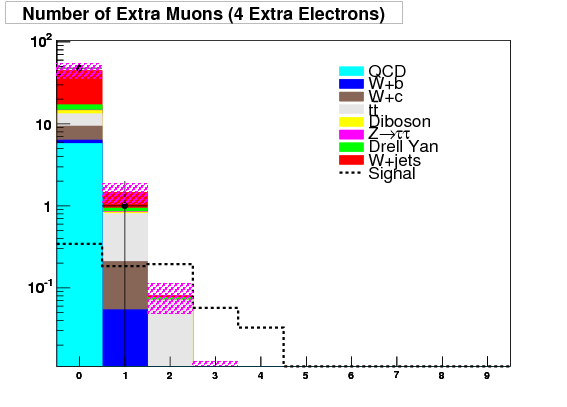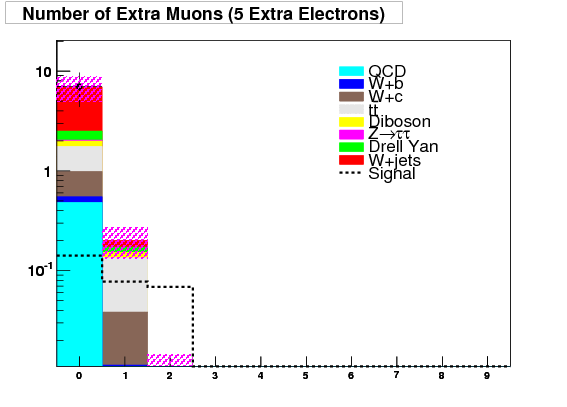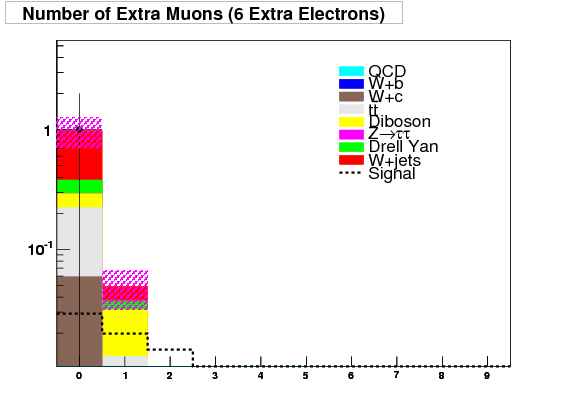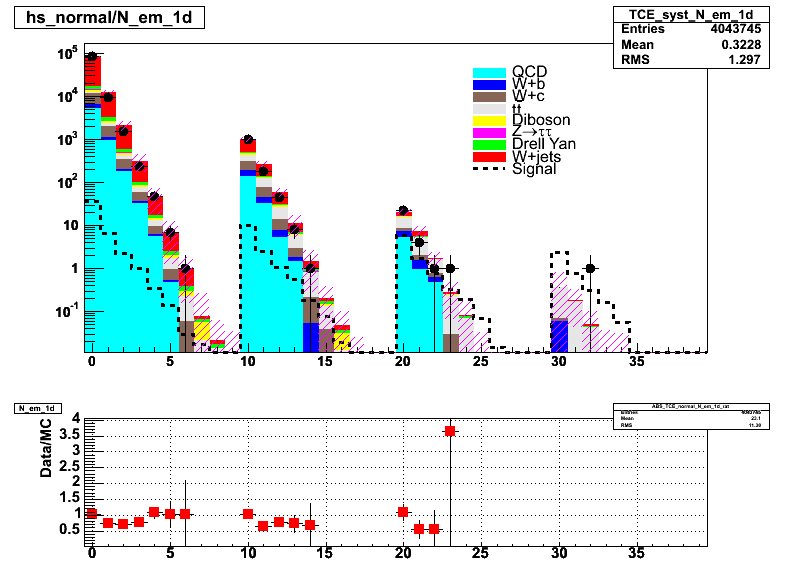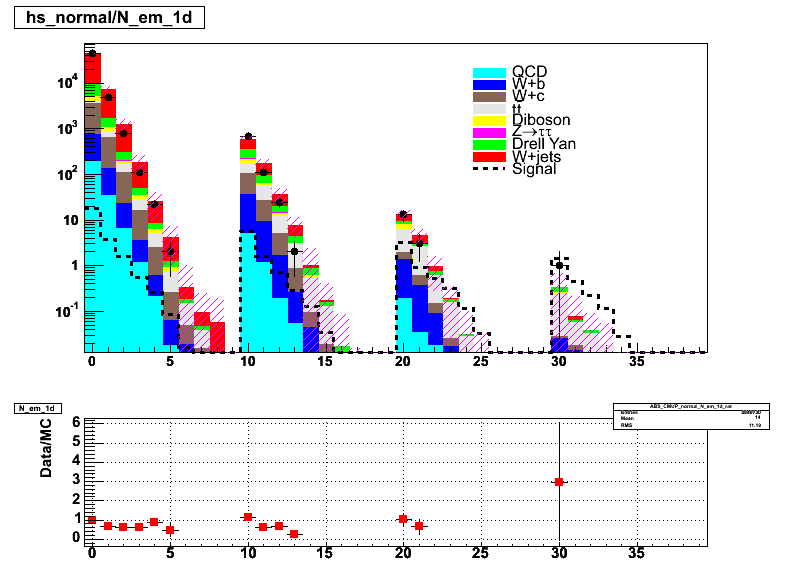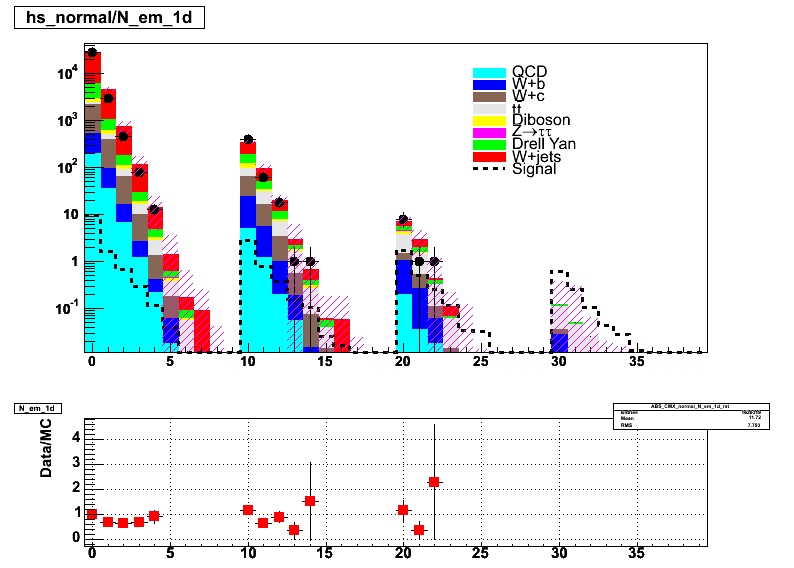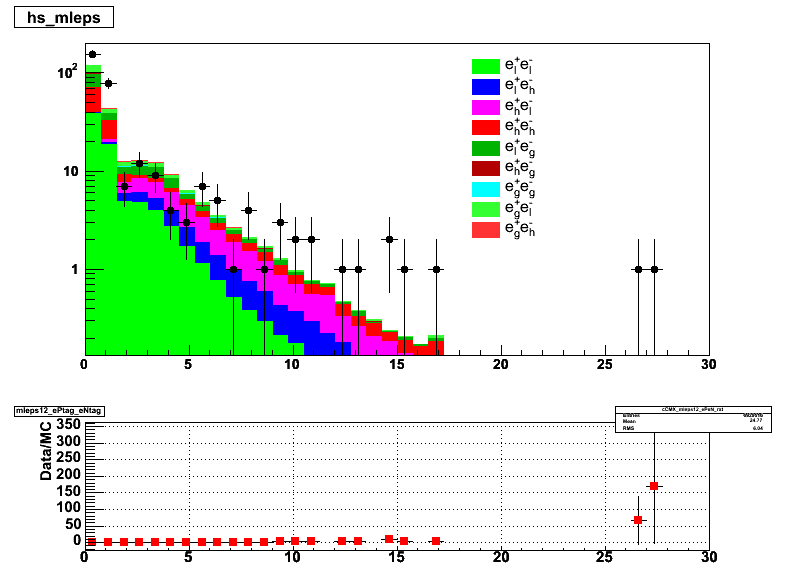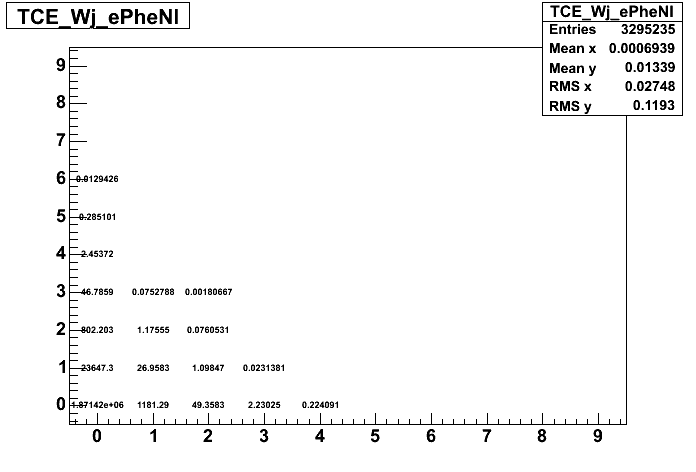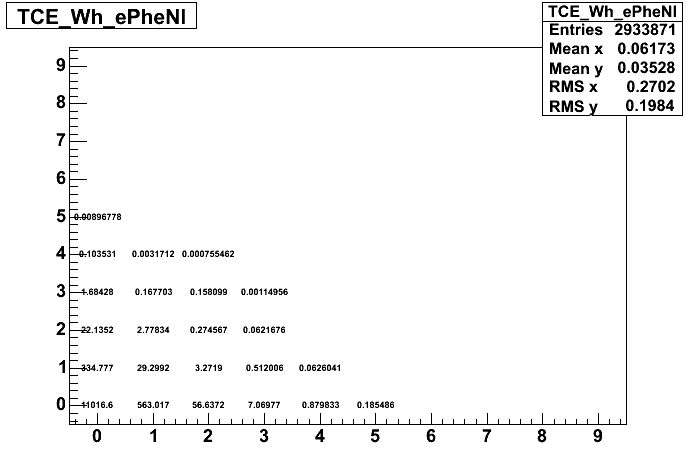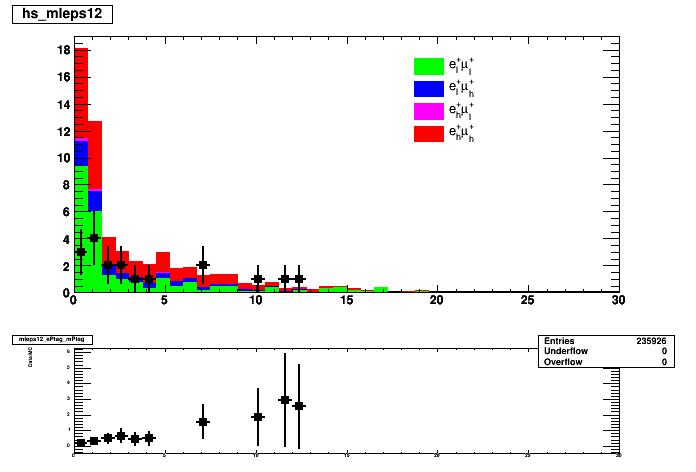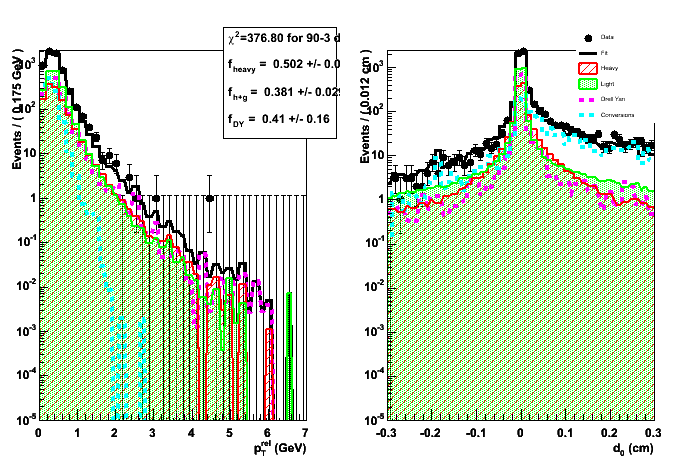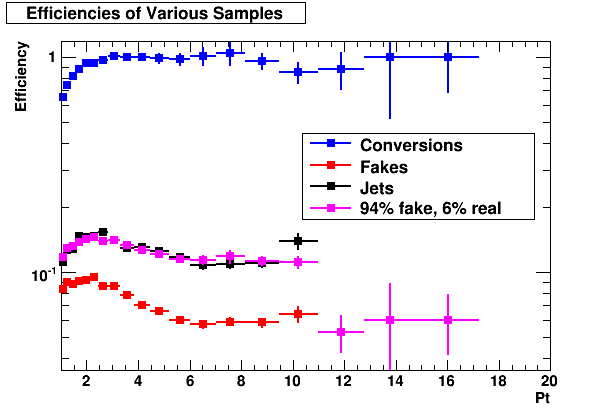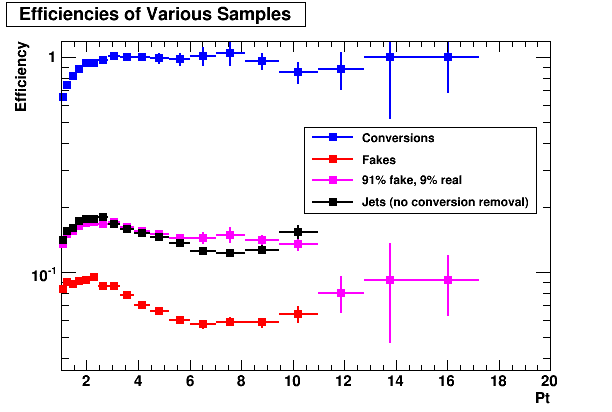I found two sources of the discrepancy between Dan’s and my limits. There was a problem with my signal modeling (I hadn’t included all of the available signal MC) and with Dan’s background modeling (he had too high of a QCD fraction.) Also, I took out the ht cut that I added a while ago, since it actually gives a worse expected limit. (I had added it in an attempt to cut down some of the conversion background)
Here are my newest plots:
TCE W:
CMUP W:
CMX W:
TCE Z:
CMUP Z:
CMX Z:
Clearly, there is a problem with the modeling in the Z channel. (It’s most noticable in the muon-triggered Z + 1 soft muon bin, where the background is low by a factor of 5. Since this issue causes problems in mclimit, I’m currently only using the W channel to set a limit. The limit is:
Observed : 0.439 +- 0.0000000
Expected : mean=0.273 +1sig=0.381 -1sig=0.209 +2sig=0.509 -2sig=0.180
If I include the Z, I get:
Observed : 0.532 +- -1.9805458
Expected : mean=0.216 +1sig=0.299 -1sig=0.164 +2sig=0.421 -2sig=0.137
